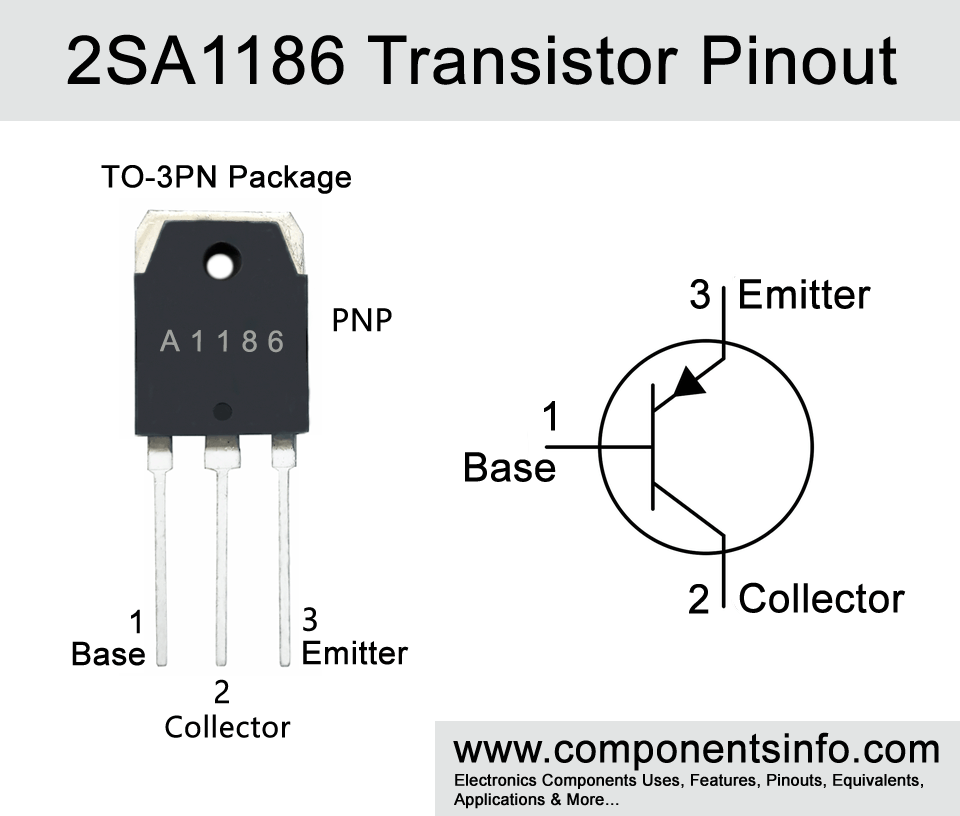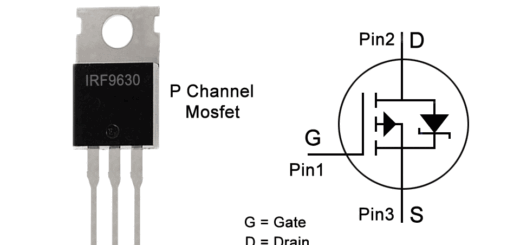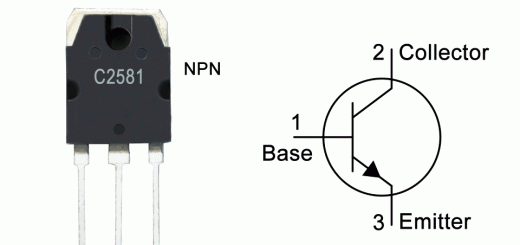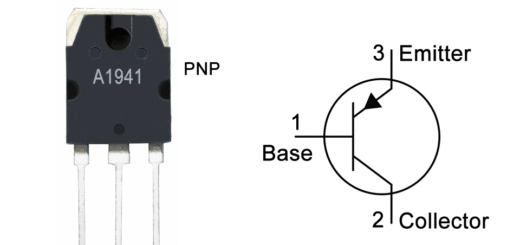2SA1186 Transistor Pinout, Features, Applications, Where and How to Use and More
2SA1186 is a PNP silicon power transistor. This article explains the 2SA1186 transistor pinout, features, applications, where, and how to use the other details of the transistor.
Absolute Maximum Ratings:
- Package Type: TO-3PN
- Transistor Type: PNP Silicon Power Transistor
- Max Collector Current(IC): -10A
- Max Collector-Emitter Voltage (VCEO): -150V
- Max Collector-Base Voltage (VCBO): -150V
- Max Emitter-Base Voltage (VEBO): -5V
- Total Device Dissipation (Pc): 100W
- Minimum & Maximum DC Current Gain (hFE): 40 To 200
- Max Storage and operating temperature: -55 to +150 Centigrade
NPN Complementary:
NPN Complementary of 2SA1186 is 2SC2837
Replacement and Equivalent:
2SA2151A, 2SA2151, 2SA1386, 2SA1386A, 2SB1317
2SA1186 Transistor Explained / Description:
2SA1186 is a silicon PNP transistor available in the TO-3PN transistor package. The transistor is designed to be used in audio amplifiers and many general purpose applications which we will discuss later.
The transistor has many good features such as:
LAPT (Linear Amplifier Power Transistor): This feature means this transistor is a very good amplifier and it is capable of providing the same signal after amplification as the input signal. This is an important feature because when a transistor amplifies a signal then the noise and distortion with the signal also amplifies but 2SA1186 has this LAPT feature which ensures the clear amplified signal at the output.
It Has High Transition Frequency:
The high frequency of a transistor play an important role in many electronic applications such as when used as an amplifier so the transistor provides better performance and second the high frequency of the transistor makes it ideal to use in RF circuits.
Complimentary to 2SC2837
Transistors are often made in pairs which are called complimentary pairs, they are made/matched to work together for better performance. 2SC2837 is the complimentary pair of 2SA1186.
Now looking at the absolute maximum ratings of the transistor, the transistor has very good absolute maximum ratings such as upto -150V of collector to emitter voltage, continuous collector current of -10A, collector-base voltage is -150V, emitter-base voltage is -5V and collector power dissipation is 100W.
Where We Can Use it & How to Use:
2SA1186 can be used in a variety of audio amplification applications. Moreover, it can also be used in a variety of other circuits such as solar, automotive, drivers, controllers, etc. The using procedure is same as we use other PNP BJT transistors by connecting its base to the input signal that you want to amplify or use to switch the transistor. Connect its emitter pin with the positive supply and collector with one side of the load and the other side of the load will be connected with the negative supply of the circuit.
Applications:
Audio Amplification
High Voltage Switching
Signal Amplification
Driving Loads under -10A
High Voltage Relay Driving
Safe Operating Guidelines:
For safe operating the transistor it is important to not use the transistor to its absolute max ratings and stay at least 20% below. So to stay within these limits it is important to calculate the value and get the result after subtracting 20%. Therefore the maximum collector to emitter voltage is -150V therefore the derived load should be under 120V. The maximum continuous collector current is -10A so the derived load should be under -8A. Moreover, it is also important that the transistor temperature should be between -55°C to 150°C.
Datasheet:
To download the datasheet just copy and paste the below link in your browser.
https://z3d9b7u8.stackpathcdn.com/pdf-down/2/S/A/2SA1186_Sankenelectric.pdf



